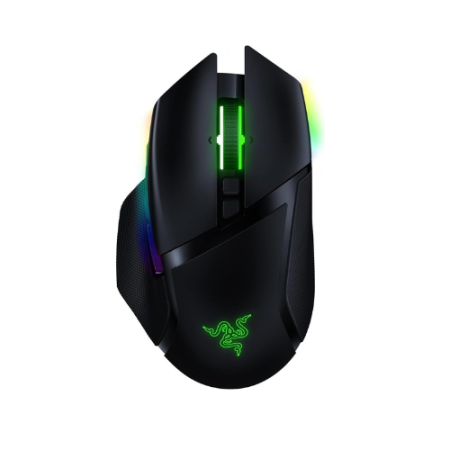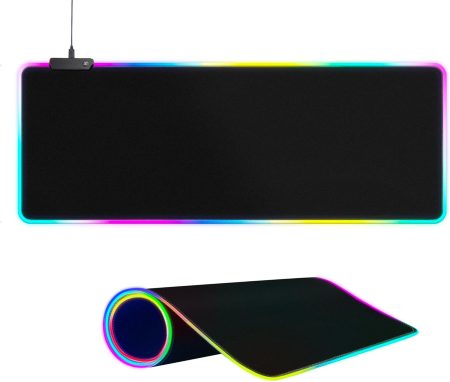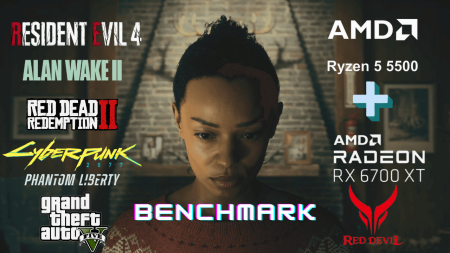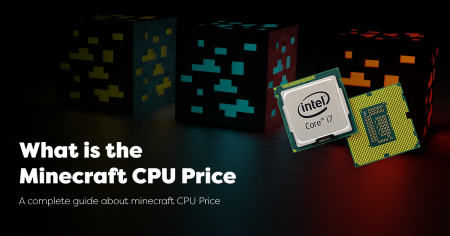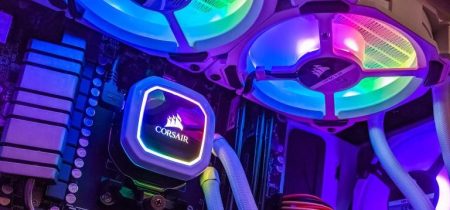A great PC offers so much comfort and reliability. But what happens when you have to cut down on spending so much? You can still get the best CPU under 300 dollars for your resource-intensive tasks. These budget-friendly processors come with great designs to help you achieve your PC needs.
For the best experience, however, you must choose the right CPU. Our review of the top six CPUs under $300 can help you decide the best one for your needs.
Top Picks – Best CPUs Under $300
- AMD Ryzen 5 5600X – Best Overall CPU Under $300
- Intel Core i5-10600KF – Best Intel CPU Under $300
- Intel Core i7-10700F – Best Energy-Efficient CPU Under $300
- AMD Ryzen 5 5600G
- Intel Core i5-9400F
- Intel Core i5-12500
1. AMD Ryzen 5 5600X
AMD Ryzen 5 5600X
The AMD Ryzen 5 5600X is a powerful mid-range CPU. It is great for gaming and other everyday tasks. Moreover, the Ryzen 5 5600X has six cores and 12 processing threads. These make it possible for the CPU to handle multiple tasks concurrently. In addition, its design allows it to perform complex tasks quickly.
Pros: Cons:The AMD Ryzen 5 5600X features a 4.6 GHz max boost clock speed. Therefore, it is fast, even during gaming and streaming. In addition, it comes unlocked. So you can overclock it to run at higher speeds. Doing so can increase power consumption and heat output.
Furthermore, it comes with the AMD Wraith Stealth cooler, which helps keep the processor at a safe temperature. The processor has 35 MB of cache and supports DDR4 system memory. It is also compatible with the Socket AM4 platform and PCIe 4.0 on X570 and B550 motherboards.
2. Intel Core i5-10600KF
Intel Core i5-10600KF
The Intel Core i5-10600KF is another powerful CPU under $300. It features six cores and 12 threads. Moreover, it is fast and efficient with a base clock speed of 4.1 GHz. It also features a turbo boost speed of 4.8 GHz.
Pros: Cons:The Intel Core i5-10600KF processor is compatible with the LGA1200 socket and the Intel 400 Series chipset. Its memory bandwidth maxes at 41.6 GB/s, and it comes with a TDP of 125 watts. Unfortunately, the Intel Core i5-10600KF does not have an integrated graphics processor.
3. Intel Core i7-10700F
Intel Core i7-10700F
The Intel Core i7-10700F is a great budget-friendly option for 3D rendering. It is an incredible choice for video editing and hardcore gaming. It has eight cores and 16 threads, enabling it to handle multiple complex tasks concurrently.
Pros: Cons:The Intel Core i7-10700KF has a base clock speed of 2.9 GHz. Additionally, it features a 4.8 GHz max turbo boost speed.
The processor is compatible with the LGA 1200 socket and the Intel 400 Series chipset. It also supports the Intel Optane Memory and the Turbo Boost Max Technology 3.0.
4. AMD Ryzen 5 5600G
AMD Ryzen 5 5600G
The AMD Ryzen 5 5600G comes with six cores and 12 threads. Its integrated Radeon graphics make it capable of delivering smooth 1080p gaming performance. Therefore, it requires no dedicated graphics card for a great experience.
Pros: Cons:The processor has a max boost clock speed of 4.4 GHz, which gives it fast response times for most tasks. In addition, you can custom-tune it as you want and overclock it.
The Ryzen 5 5600G has 19 MB of cache and supports DDR4-3200 system memory. In addition, it supports the Socket AM4 platform.
You get an AMD Wraith Stealth cooler alongside the CPU. This keeps the processor at a safe temperature without causing loud noises.
5. Intel Core i5-9400F
Intel Core i5-9400F
The Intel Core i5-9400 is a mid-range processor that is part of the 9th generation of Intel Core processors. It has six physical cores. The processor operates at a base clock speed of 2.9 GHz when not under load. Its maximum boost clock speed is 4.1 GHz. It is the max speed that the processor can reach under load with sufficient power and thermal headroom.
Pros: Cons:The processor has 9 MB of cache. Moreover, it supports DDR4-2666 memory up to 64 GB. It does not have an integrated graphics processor, so it requires a separate graphics card.
It is compatible with LGA 1151 sockets and Intel 300 series chipset motherboards. Furthermore, it supports Intel Optane Memory, which you can use to improve the performance of a computer by storing frequently used data and instructions.
6. Intel Core i5-12500
Intel Core i5-12500
The Intel Core i5-12500 belongs to the 12th generation of processors in the Intel Core category. It is suitable for various tasks, including everyday computing, web browsing, and running productivity applications.
Pros: Cons:The processor has a base clock speed of 3.0 GHz. With the Turbo Boost technology, you can push it to 4.1 GHz. The processor is built using a 10 nm+ manufacturing process. This allows for higher clock speeds and makes it more energy-efficient than previous-generation processors.
Furthermore, it has 6 MB of L3 cache, a fast memory area that stores frequently used data and instructions. The processor also supports hyper-threading. Moreover, two threads can be processed concurrently by each physical core. This results in better performance in multithreaded applications.
It is also compatible with the LGA 1700 socket that you can see in newer motherboards. Additionally, it features a 65W TDP.
How to Choose the Best CPU Under $300
A processor is not something you buy every day, so you may not be an expert at finding the best one. But you can get the best CPU under $300 by considering the following factors:
Processor Speed
Firstly, what is the main purpose of your computer? A gaming computer requires a processor with an impressive amount of clock speed. It also needs multiple cores so modern games can operate smoothly without a hitch.
On the other hand, if you only need a processor for everyday tasks like web browsing and word processing, you may require something simpler. So, a lower clock speed should suffice.
Compatibility
Ensure that your motherboard can support the CPU you choose. Different CPUs have different sockets. You should choose one that works with the socket on your motherboard.
You can check online or visit the manufacturer’s website for compatible CPUs. Moreover, you can use a compatibility tool to see which CPUs are compatible. It would be best to double-check compatibility before purchasing a CPU to ensure it will work with your existing system.
Number of Cores and Threads
A processor with more cores and threads can be more efficient than one with fewer cores and threads. Cores and threads are used to measure the parallel processing power of a processor.
A processor with more cores and threads can handle more simultaneous tasks.
However, it is crucial to note that other factors like the design of the processor, and clock speed can also influence its performance. So it is advisable to consider these alongside the CPU’s cores and threads.
Feedback and Reviews
Reviews from other users can suggest the efficiency of a processor. Honest customer feedback can also inform you of the pros and cons of a processor. Hence, find comments about the processor’s performance, reliability, and value for money.
Keep in mind that everyone has different needs and priorities, so what works well for one person may not be the best choice for you. It is a great idea to read reviews from different sources to get a well-rounded understanding of the processor.
Warranty
Check the warranty the manufacturer offers on the processor before buying it. A warranty protects your processor and reassures you of its quality. Most manufacturers offer a limited warranty. Therefore, its duration and coverage can depend on several factors.
Some processors may come with longer warranties. Moreover, check if it has additional coverage or if you have to pay extra. It is always best to consider the warranty on a CPU before buying it.
Brand Reputation
Reputable brands like Intel or AMD have earned a reputation for producing high-quality and reliable processors. Both Intel and AMD offer amazing processors with great features for different needs and budgets.
Intel is known for its high-performance processors, while AMD is known in the gaming community for offering good value for money.
Frequently Asked Questions on CPUs Under $300
What are the best brands for CPUs under $300?
The top brands for the best CPU under $300 are Intel and AMD. They offer several options for the price range. Both brands guarantee high-efficient processors for various purposes. However, you need to identify the best ones for your specific need.
What types of CPUs are available under $300?
Many CPUs in this price range are great for gaming and general computing. Most CPUs in this price range would likely fall under the AMD Ryzen or Intel Core series. Additionally, they mostly feature four or more cores.
Some amazing CPUs under $300 include AMD Ryzen 5 5600X, Intel Core i7-10700K, and Intel Core i5-10600K. Depending on your existing setup, there are many other options available.
How do I choose the right CPU for my needs?
It is vital to consider the type of tasks you need the CPU for before choosing it. One major consideration is the clock speed and the number of cores. Will you be using it for gaming or heavy video editing? Gamers would need higher speed and more cores than most users. You can also look at the possibility of overclocking, among other things.
Are CPUs under $300 durable?
The best CPUs under $300 are durable and can handle different tasks without a problem. These CPUs are typically made with high-quality components and are reliable and long-lasting.
However, you should note that no device is entirely immune to problems. So your best bet should be on reputable manufacturers offering a warranty. Additionally, it is essential to take good care of your CPU by keeping it cool and dust-free.
What is the ideal processor speed?
Dual-core processors are suitable for everyday tasks like media playback, internet browsing, and word processing. Quad-core processors can offer improved performance overall. These processors can handle more demanding tasks such as gaming, graphic design, and video editing.
A clock speed of 3.5 GHz to 4.2 GHz is considered an acceptable range for most users. However, users who need to run resource-intensive applications may require a quad-core processor with a clock speed of up to 4.0 GHz.
On the other hand, hardcore gamers need a 6 or 8-core processor with a high clock speed for the best experience.
How can I test the CPU speed?
You can test the speed of your CPU in different ways. Benchmarking tools are your best option, the tool tests your CPU by stressing it. It then measures the CPU’s performance as it responds to the stress.
Also, you can find task-specific benchmarking tools. These can measure your CPU’s performance for specific tasks, like gaming or video editing.
You can also manually stress the CPU by running powerful tasks to see how it responds. This may not be as accurate as a benchmarking tool, but it can give you an idea of your CPU’s performance.
Conclusion
It is best not to break the bank to buy a high-quality processor. There are great CPUs under $300, even for heavy usage.
We have reviewed the top six you should consider buying for an incredible experience.
The AMD Ryzen 5 5600X comes first in our top picks. This incredible CPU combines great speed and high efficiency. It also comes with a silent and cool operation. It offers amazing value for its money’s worth.











